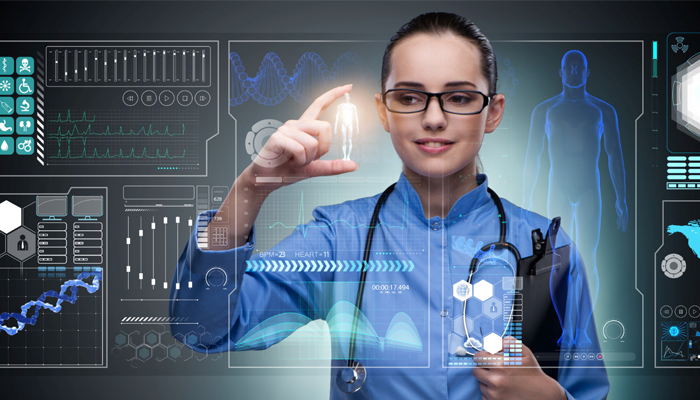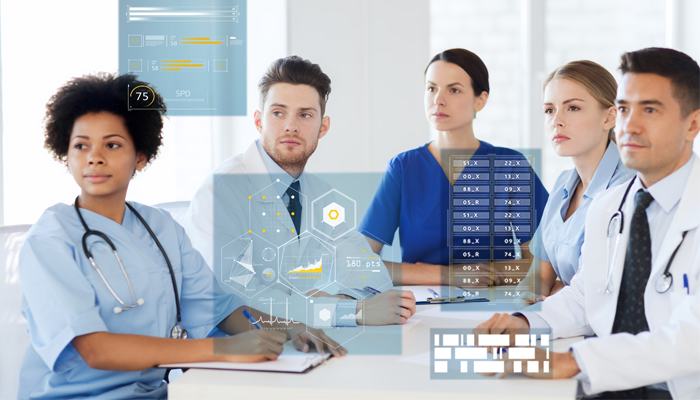Posted On December 18, 2024
Why Are IoT-Integrated Devices Crucial for Personalized Patient Care
In today’s fast-paced healthcare landscape, the integration of Internet of Things (IoT) devices has become a transformative force, particularly in the realm of personalised patient care. These devices enable healthcare providers to offer tailored treatment options, improving health outcomes and enhancing patient engagement. In this blog, we will explore how IoT-integrated devices play a crucial role in personalising patient care, focusing on their impact on health monitoring, engagement, personalised treatment plans, and real-world success stories.
Transforming Patient Care: The Role of IoT in Health Monitoring
IoT-integrated devices allow for continuous health monitoring, collecting real-time data from patients in their everyday environments. These devices can track vital signs such as heart rate, blood pressure, and glucose levels, providing healthcare providers with valuable insights into a patient's condition. This continuous stream of data enables practitioners to detect anomalies early, ensuring timely intervention when necessary.
For instance, wearable devices like smartwatches can monitor a patient’s heart rate throughout the day, alerting both the patient and their healthcare provider of any irregularities. This proactive approach helps in managing chronic conditions and reduces the need for hospital visits, ultimately leading to better health outcomes.
Real-Time Data: How IoT Devices Enhance Patient Engagement
Engagement is a critical component of effective healthcare. IoT-integrated devices empower patients by giving them access to their health data in real-time, allowing them to take an active role in their own care. When patients can monitor their health metrics, they are more likely to adhere to treatment plans and make informed lifestyle choices.
Moreover, these devices often come equipped with apps that remind patients to take their medication, attend appointments, or engage in physical activity. By facilitating communication between patients and healthcare providers, IoT devices foster a collaborative relationship, enhancing overall patient engagement and satisfaction.
Improving Health Outcomes Through IoT-Driven Personalization
Personalised medicine is an evolving field that tailors treatment strategies based on individual patient characteristics. IoT devices contribute significantly to this endeavour by providing detailed insights into a patient’s unique health profile.
For example, by analysing data collected from wearable devices, healthcare professionals can identify trends and adjust treatment plans accordingly. A patient’s medication dosage can be fine-tuned based on their activity levels, stress factors, and other lifestyle indicators. This level of personalisation not only enhances the effectiveness of treatments but also minimises side effects, leading to improved patient outcomes.
The Future of Healthcare: Integrating IoT for Tailored Treatment Plans
The potential for IoT in healthcare is vast and continues to grow as technology evolves. As more devices become connected and the data they generate becomes more comprehensive, the ability to create tailored treatment plans will only improve.
Healthcare providers can utilise predictive analytics powered by IoT data to foresee potential health issues before they arise. For instance, a patient with a history of heart disease may be closely monitored through an IoT device that analyses their physical activity and stress levels. If the data suggests an increased risk, the healthcare provider can intervene proactively, offering personalised recommendations or adjusting medication before a serious health event occurs.

Case Studies: Success Stories of IoT in Personalized Patient Care
Several healthcare organisations have already begun to reap the benefits of IoT-integrated devices in personalising patient care. For instance, a hospital in Melbourne implemented an IoT-based monitoring system that tracks post-operative patients’ vital signs remotely. This system reduced hospital readmission rates significantly, as healthcare professionals could intervene early in case of any complications.
Another success story comes from a healthcare provider in the UK that utilised wearable devices to manage patients with diabetes. By continuously monitoring blood sugar levels and activity, healthcare teams could provide tailored advice, resulting in better diabetes management and improved patient quality of life.
Breaking Down Barriers: IoT Devices and Accessibility in Healthcare
One of the most significant advantages of IoT-integrated devices is their ability to make healthcare more accessible to a broader range of patients. Traditional healthcare often involves in-person visits, which can be challenging for individuals with mobility issues, chronic conditions, or those living in remote areas.
IoT devices, such as smart wearables and home monitoring systems, allow patients to manage their health from the comfort of their homes. For instance, patients with diabetes can use connected glucose monitors to track their blood sugar levels in real time, sharing data instantly with their healthcare providers. This accessibility ensures that even the most vulnerable populations receive timely and effective care, thereby enhancing overall health equity.
How IoT-Integrated Devices Facilitate Remote Patient Monitoring
Remote patient monitoring (RPM) has emerged as a critical component of personalised care, particularly during the pandemic when in-person visits were limited. IoT devices enable healthcare professionals to monitor patients' vital signs and health metrics from afar, allowing for proactive intervention when necessary.
For example, wearable devices can track heart rate, activity levels, and sleep patterns, sending this data directly to healthcare providers. This continuous flow of information means that doctors can make informed decisions without needing the patient to come in for frequent check-ups. RPM not only improves the patient experience but also optimises healthcare resources, allowing providers to focus on those who need immediate attention.
Challenges and Opportunities in Implementing IoT Solutions in Healthcare
While the benefits of IoT-integrated devices are substantial, their implementation does come with challenges. Concerns regarding data privacy and security are paramount, as sensitive health information is transmitted and stored digitally. Ensuring that these systems are secure and compliant with regulations is crucial to maintaining patient trust.
Moreover, the integration of IoT devices into existing healthcare systems requires significant investment in technology and training. Healthcare providers must adapt their workflows to effectively incorporate these tools, which can be a daunting task for many organisations.
Despite these challenges, the opportunities presented by IoT technology are immense. With advancements in machine learning and data analytics, the potential for predictive analytics and personalised treatment plans is becoming a reality. This technology allows healthcare providers to not only react to patients' needs but also anticipate them, leading to better health outcomes.
Conclusion
IoT-integrated devices are transforming the healthcare landscape, making personalised patient care more achievable than ever. By enabling continuous health monitoring, enhancing patient engagement, and facilitating tailored treatment plans, these devices play a pivotal role in improving health outcomes. As technology continues to advance, the integration of IoT in healthcare will undoubtedly pave the way for even more innovative solutions, fostering a future where personalised patient care becomes the norm rather than the exception.
For more insights into how IoT and healthcare technology can enhance patient care, visit us at smartData Inc.








